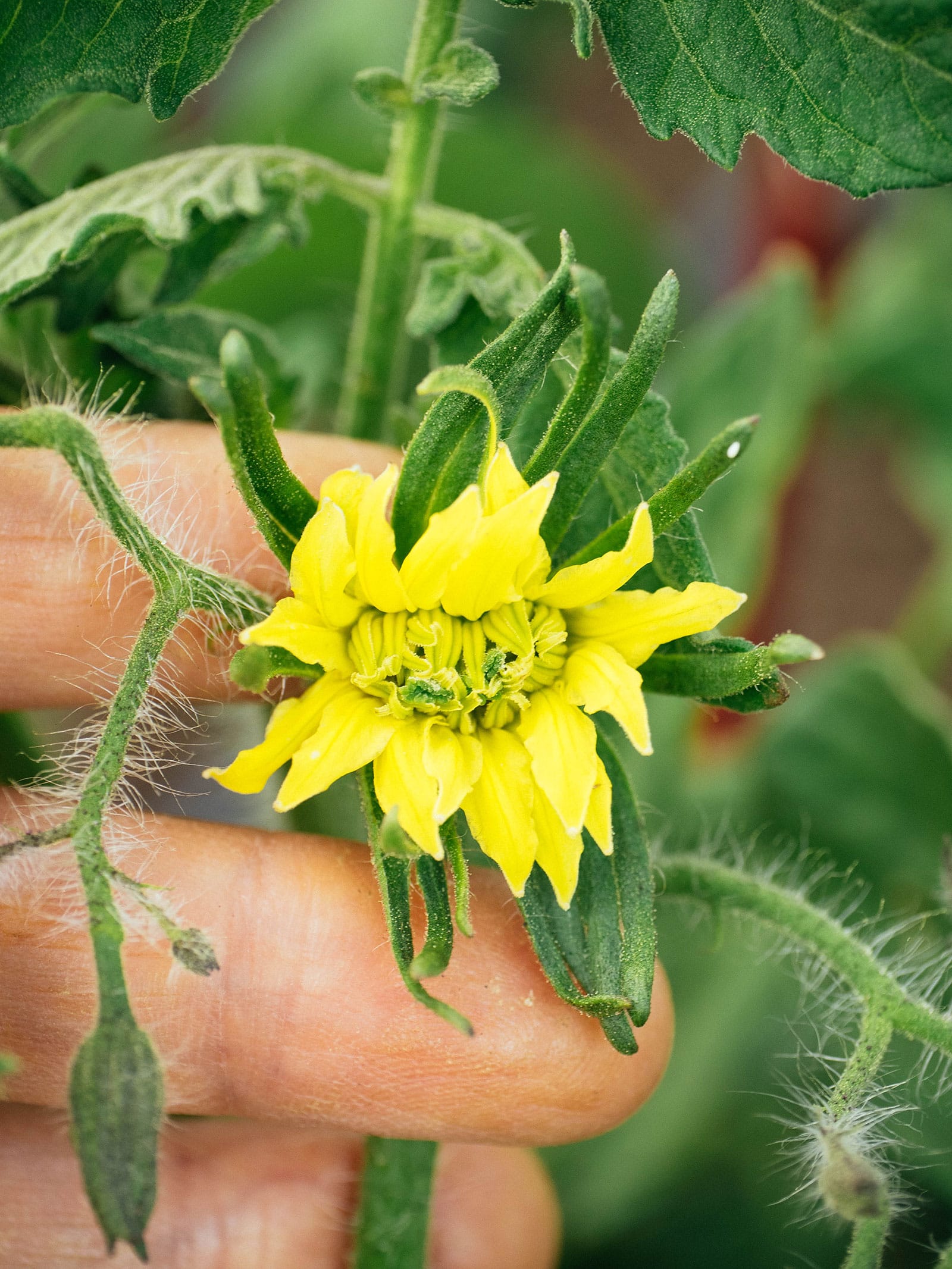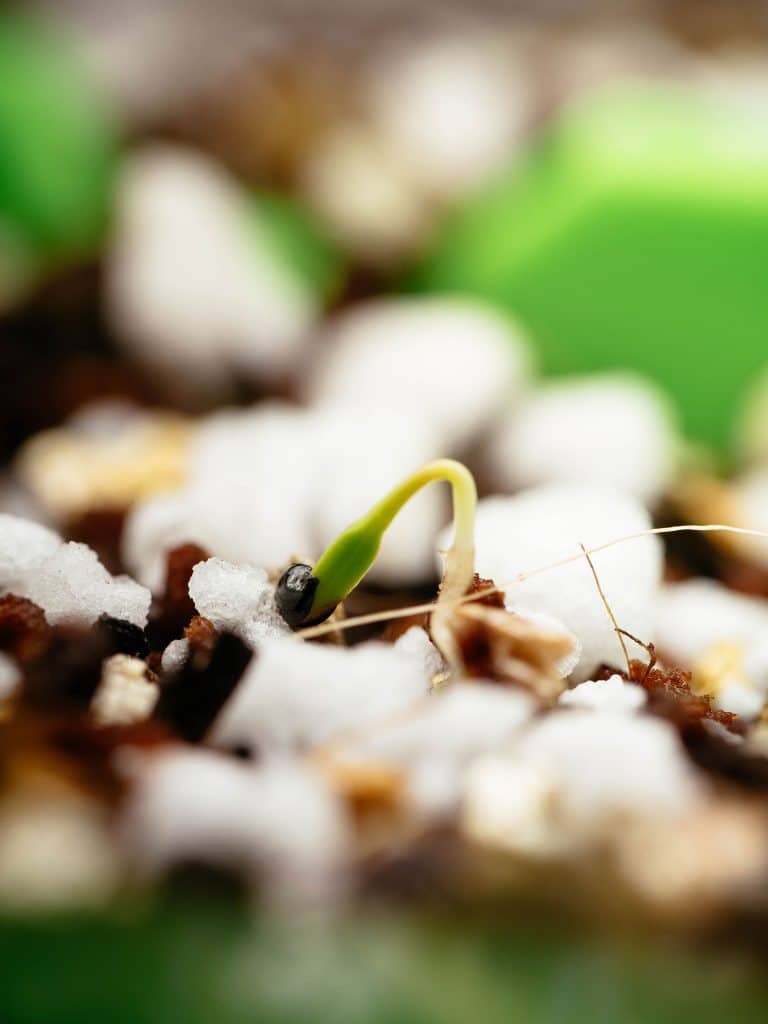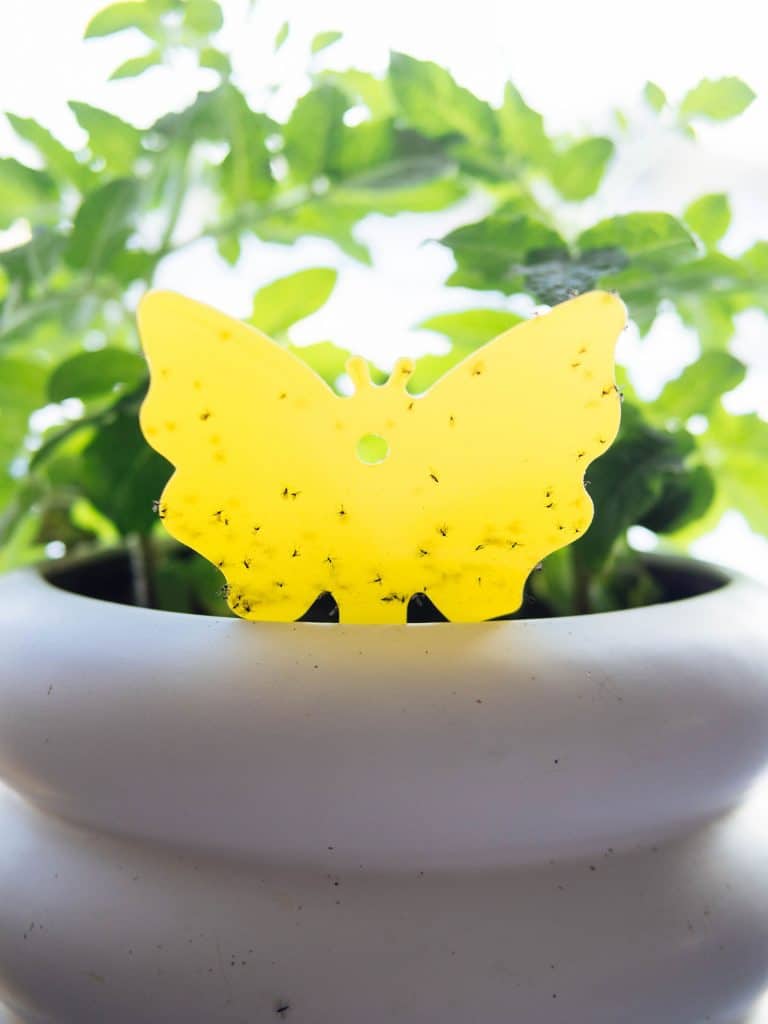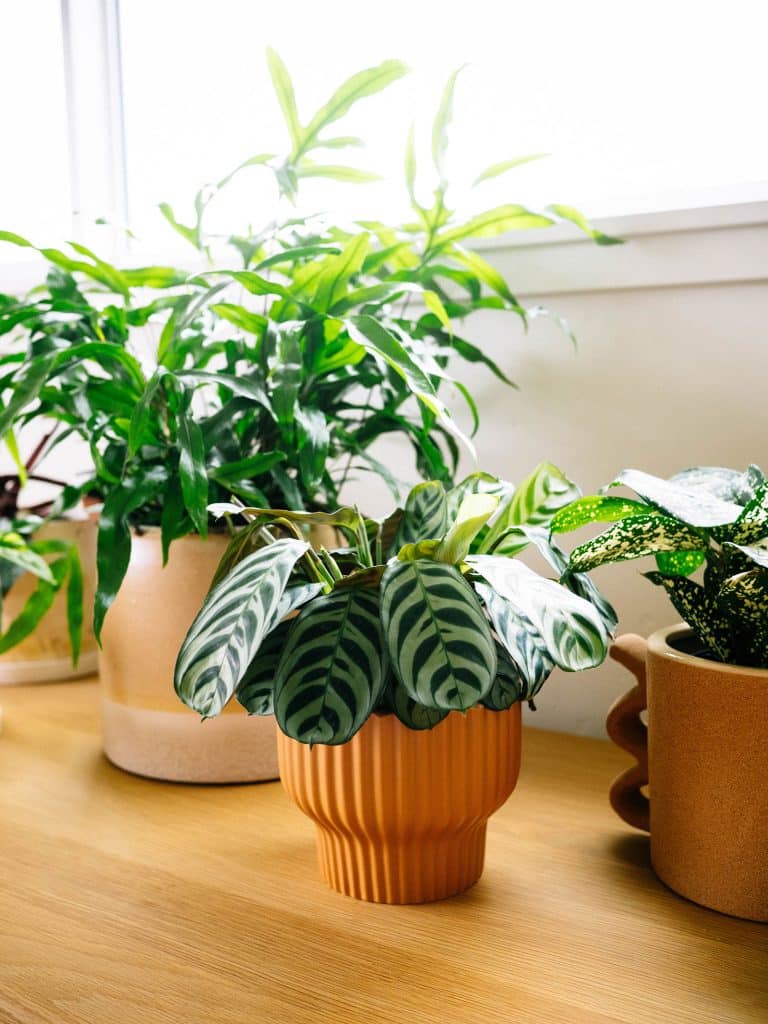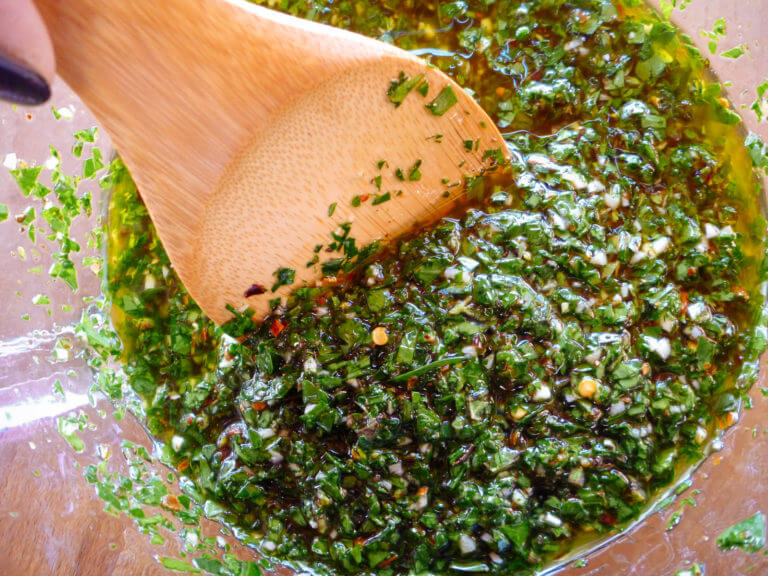I’ve long heard the myth about tomato megablooms, the genetic anomaly that’s key to growing massive 3-pounders and up. But I’d never actually seen one in real life until it happened to one of my plants, an heirloom tomato variety called Cherokee Chocolate.
Megablooms are relatively rare but they’re a coveted characteristic among champion tomato growers and “giant vegetable” competitors. Certain breeds are known to consistently produce megablossoms, but even a run-of-the-mill tomato variety can suddenly develop one.
What is it?
A tomato megabloom (also known as fasciation—not fascination, though it’s certainly pretty fascinating) happens when two or more flowers fuse together at the ovary, with the single superbloom carrying two or more ovaries. Occasionally, there may even be three or four (or even more) flowers fused together.
Fasciated flowers are pretty easy to spot next to ordinary flowers. They look like dandelions with all their extra yellow petals, and if you look closely, you can see what sets them apart.
While single tomato flowers have five (fused) petals with one pistil (the green “antenna” sticking out of the center), megablooms have multiple pistils emerging from an oversized flower with many petals.


If the megabloom is pollinated and left to grow, each ovary forms a fruit but the fruits are joined together, with each fruit forming its own bulge.
What you get is a bizarre, many-fruited tomato that kind of looks like conjoined twins. Or triplets! Some catfaced tomatoes, with their wild-looking lobes and deep ribs, are the result of megablooms (but not always).
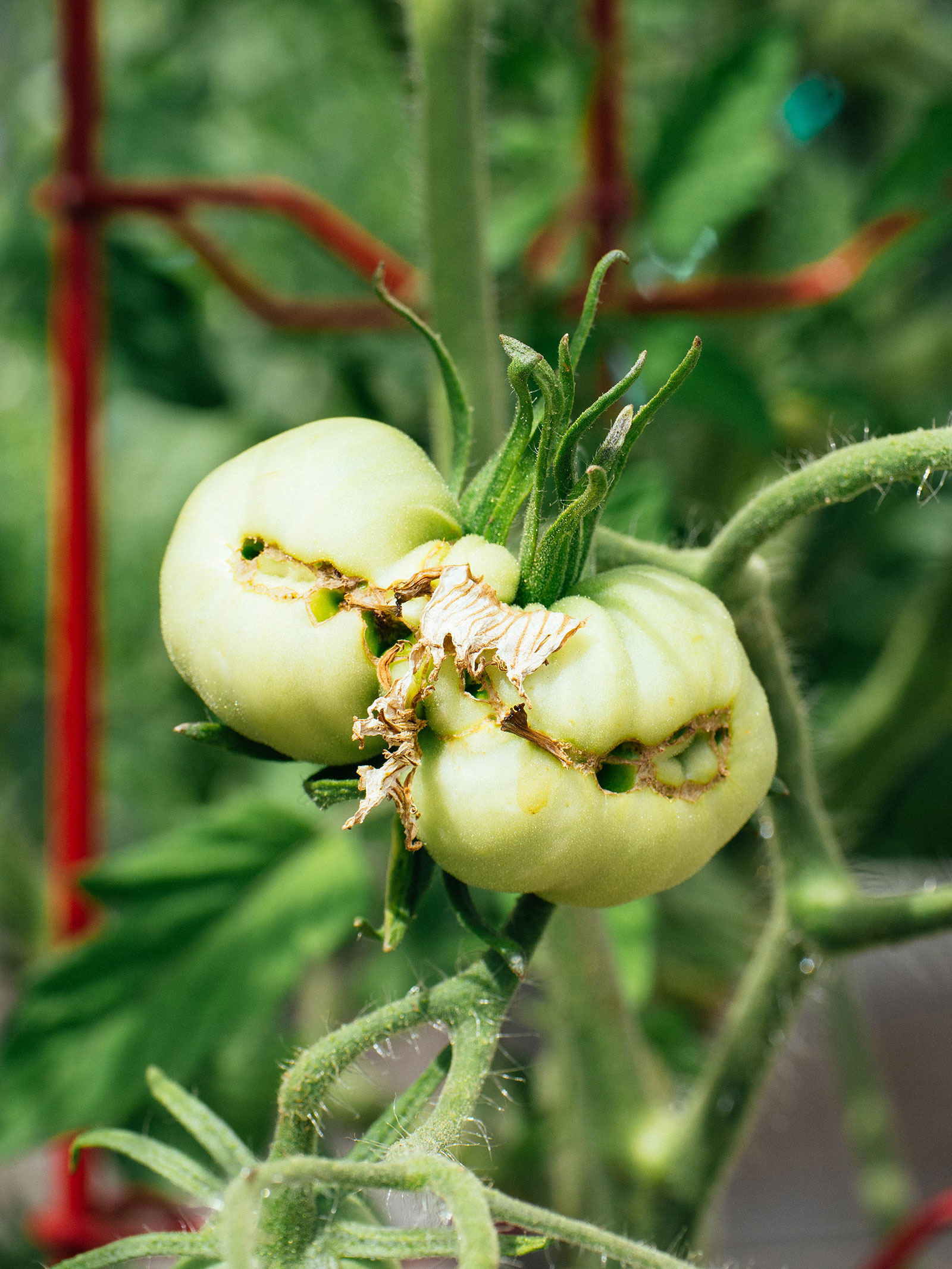
How megablooms happen
While you can increase your chances of getting a megabloom by choosing the right variety (and I’ll get to that below), sometimes it’s just a matter of luck (if you actually want that to happen) and sometimes the mutation is caused by environmental stressors.
One study found that tomato plants grown in low temperatures (62°F during the day and 45°F at night) were more susceptible to flower abnormalities, as these cooler temps altered the genes responsible for flower formation.
That’s why fasciation typically only affects the first few tomatoes on a plant. As the weather warms, future flowers develop normally.
Tomato varieties that produce megablooms
Megablooms can occur on any heirloom or hybrid tomato variety, but you’re more likely to find them on beefsteaks and other large-fruited indeterminate types.
Serious competitors who try to break tomato growing records usually go for a hybrid called Big Zac. This variety has a strong tendency to produce megablossoms and was developed by Minnie Zaccaria, a seven-time New Jersey tomato-growing champion who had a personal best of over 6 pounds!
Other varieties known for producing megablooms include Domingo, Burpee Supersteak, Brutus Magnum, Giant Belgium, MegaMarv, and Delicious.
Where to buy
What to do if you find a megabloom
In most cases, nothing! Not all megablooms result in fruit, since they typically require extra pollen. If they aren’t adequately pollinated, the megablooms will dry up and fall off.
Related: If your tomato flowers keep falling off, here’s what you can do
If the megabloom does get pollinated, the resulting fruit, no matter how gnarly or “ugly,” is perfectly edible (though sometimes it can be a bit more watery than a regular tomato). But I do pick this kind of tomato before it’s fully ripe and finish ripening the fruit indoors, as its mammoth size and catfacing make it more susceptible to damage the longer it’s left on the vine.
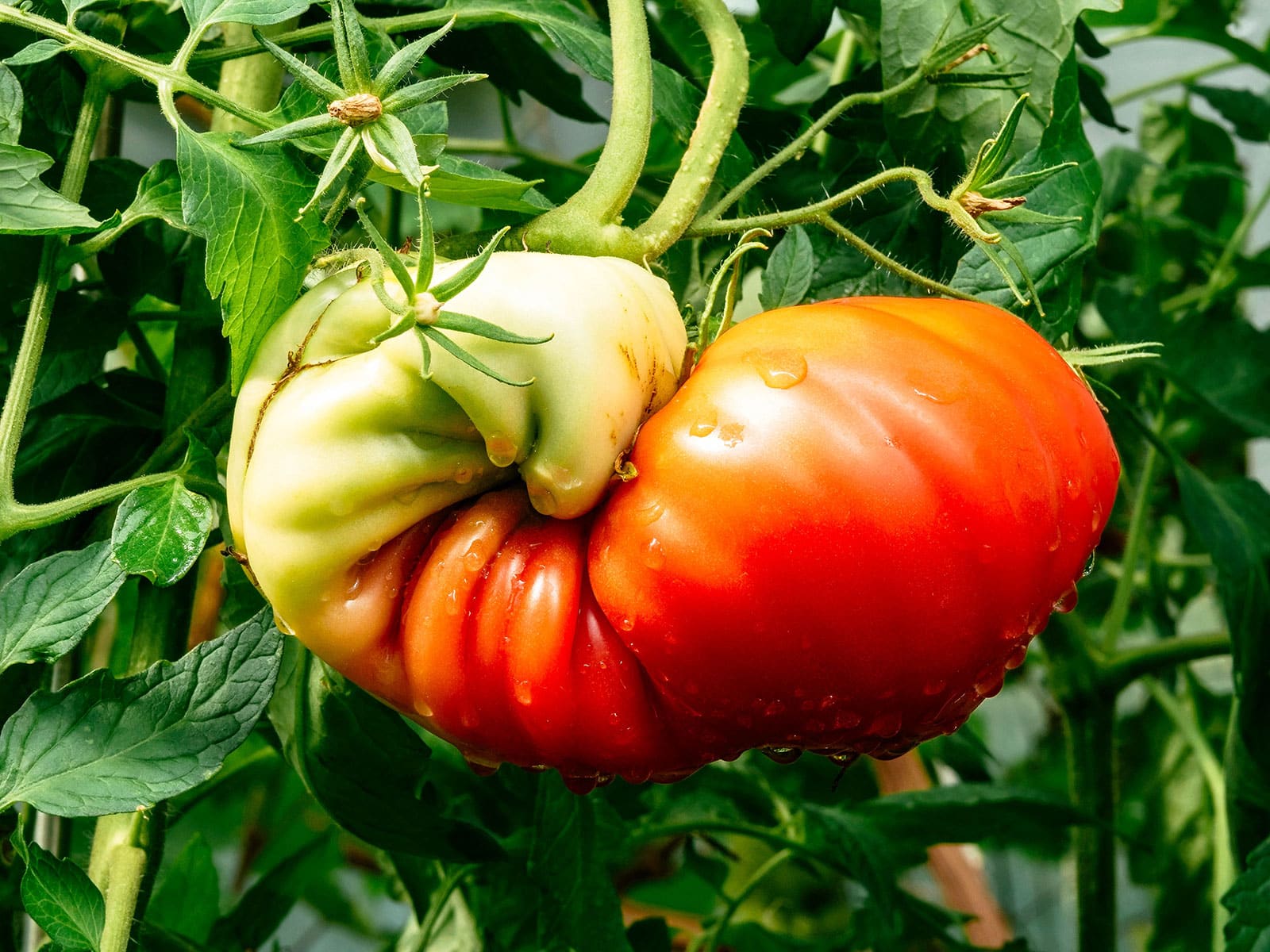
Keep in mind that these extra large tomatoes do require extra energy to grow, so if your goal is to get as many tomatoes as possible, you may not want all of your plant’s energy going to a single Franken-tomato. In this case, you can simply pinch off the megabloom so your plant focuses on growing more (regular-shaped) fruits instead.
Personally, I find tomato megablooms to be an interesting little mishap of nature and like to leave one or two on the plant to see what happens!


